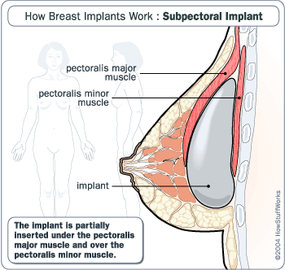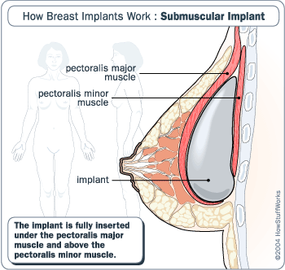Implant Placement
One of the most important factors in a successful breast augmentation is the proper placement of the implant. There are three places implants can be put to increase the size of a woman's breasts:
- Subglandular
- Subpectoral
- Submuscular
Subglandular placement puts the implant directly behind the mammary gland and in front of the muscle. This placement requires the least complicated surgery and yields the quickest recovery. Athletic women may opt for this placement because it prevents flexing chest muscles from interfering with the look or integrity of the implant.
Advertisement
The downsides of this placement are increased chance for capsular contracture, greater visibility and vulnerability for the implant. This is because only the flesh and gland separate the implant from the outside world. Depending on the amount of available breast tissue, the implant may be seen "rippling" through the skin.
Subpectoral placement involves lodging the implant under the pectoralis major muscle. Because of the structure of this muscle, the implant is only partially covered. This alternative reduces the risk of capsular contracture and visible implant rippling, but recovery time from this positioning is typically longer and more painful because the doctor has to manipulate the muscle during surgery. Also, because of increased swelling, the implant may take longer to drop into a natural position after surgery.

If the augmentation is being performed to lift sagging breasts, this type of placement may not be the right approach. Because the implant is only partially covered by the muscle, the weight of the fluid is not supported. In a woman with sagging breasts, the implant may droop and create two separate bulges in the breast lobe.
Submuscular placement puts the implant firmly behind the chest muscle wall. The implant is placed behind the pectoralis major muscle and behind all of the supporting fascia (connective tissue) and non-pectoral muscle groups. Submuscular implants tend to be the best for mammograms, as they put the implant fully behind the area that needs to be examined. This placement has the same drawbacks of subpectoral placement with an even longer recovery time.

In the next section, we will learn about the different procedures surgeons use to put the implants in place.
